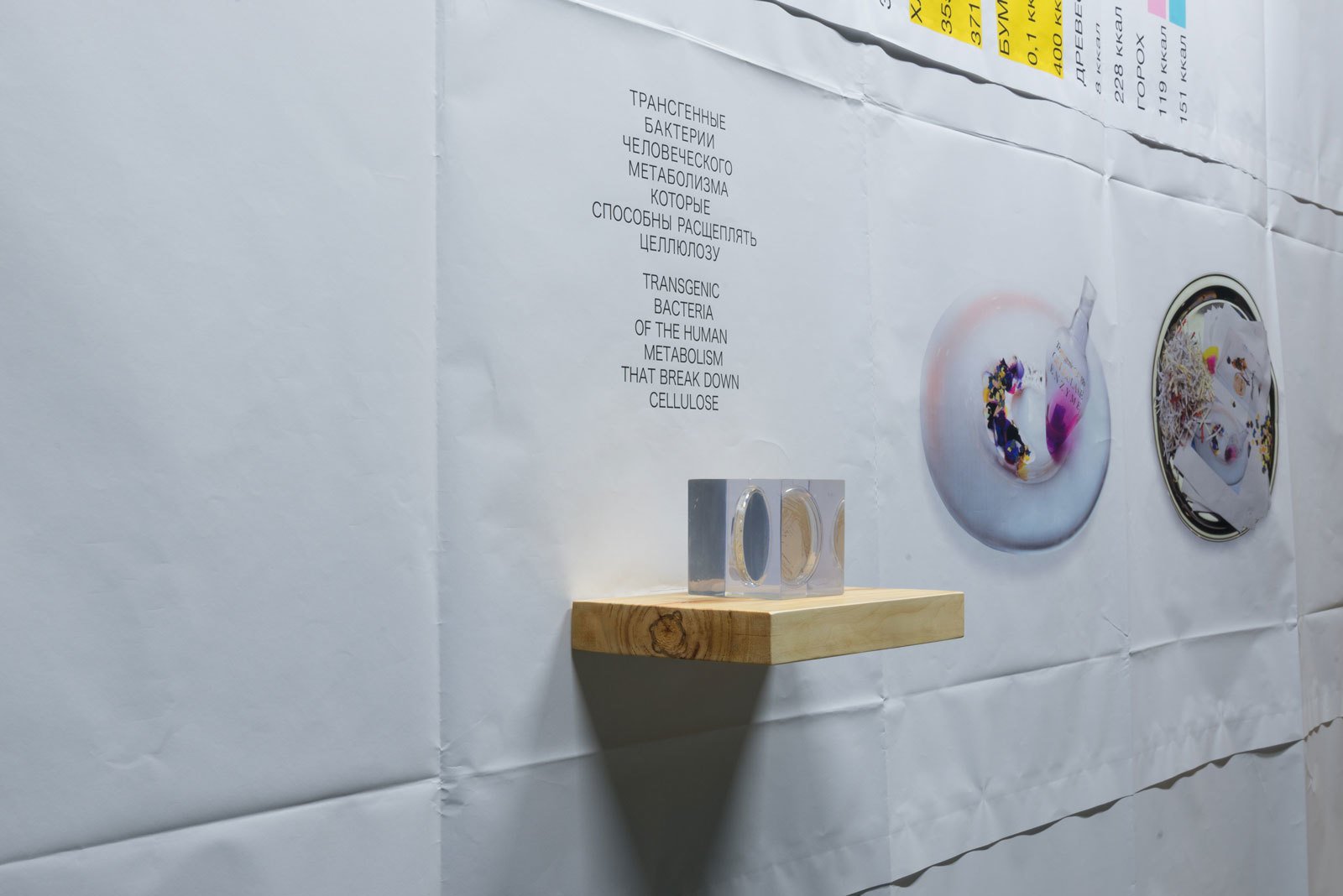Gints Gabrāns
b. 1970, Valmiera, Latvian SSR. Lives and works in Riga

FOOOD 2050, 2014–2019
Digital print on paper, acrylic cube, 410 × 507 × 25 cm
Courtesy of the artist
It is believed that in the first century AD, 150 million people were living on Earth. By the early nineteenth century the number was 978 million, and over the course of the twentieth century the population grew from two to seven billion. The United Nations predicts that by 2050 the planet’s population will reach ten billion people, and 70% more food will be required to feed them. Even today, humanity is unable to feed itself without the use of chemical fertilisers, pesticides, and GMO, and over the next forty years we will need to produce more food than we have over the past 8,000 years. Teaming up with microbiologist Jānis Liepiņš and the company GenScript, artist Gints Gabrāns offers an alternative to the endless expansion of the food industry: genetically modified bifidobacteria that can synthesise enzymes which will allow humans to metabolise cellulose, and therefore obtain more nutrients from common foodstuffs, and eat paper and wood.
Cellulose (dietary fibre) makes up a considerable part of plant-based foods, but it cannot currently be digested by humans and therefore has no nutritional value. With the enzymes that break down cellulose, humans will be able to obtain around 30% more nutrients from foods like potatoes, carrots, rye, wheat, rice, buckwheat, cabbages, and leafy greens. Moreover, if we could digest cellulose, 100 grams of paper would give us more energy than 100 grams of bread. An enzyme allowing to break down cellulose is not a sci-fi idea but an actual scientific invention that could potentially save humanity from hunger not only in the overpopulated world of the future, but also today, when over 800 million people suffer from hunger and chronic malnutrition. According to the World Health Organization, 46,000 people starve every day, which means one person dies from starvation every two seconds. FOOOD 2050 could change that.
The virtual reality extension of this project, developed by the artist specifically for the exhibition, is available through the QR code. A virtual skyscraper 30 km high is placed above the Museum building and is activated through its GPS coordinates. The building hosts the FOOOD 2050 office, as well as the Diabetes Center, Methane Control Center, and other organizations ensuring life support on the overpopulated planet.